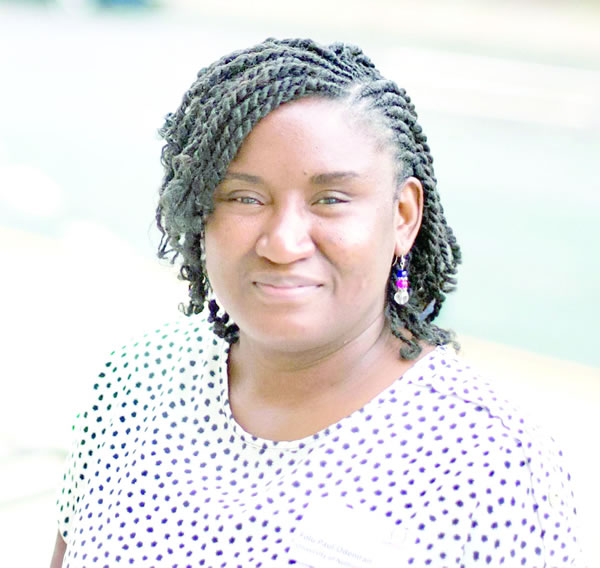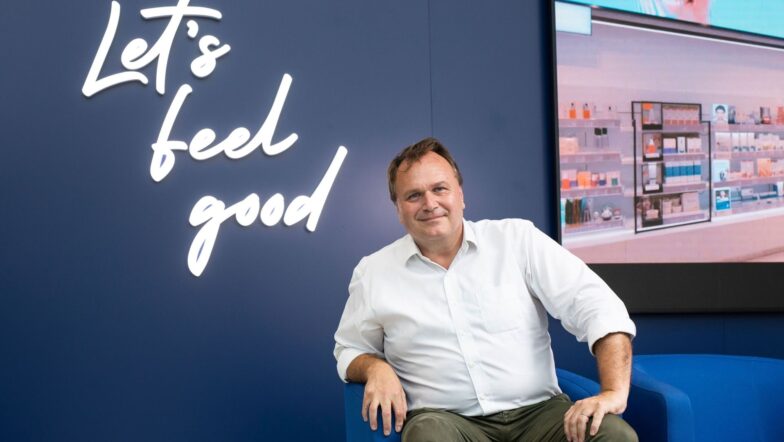Dr. Kehinde Foluke Paul-Odeniran, a Newton International Fellow at the School of Pharmacy, University of Nottingham, United Kingdom, holds both a Bachelor’s and Master’s degree in Biochemistry from the University of Ibadan, and a Master’s and PhD in Pharmaceutical Chemistry from the University of KwaZulu-Natal, Durban, South Africa. The member of the Royal Society of Chemistry and Fellow of the Higher Education Academy, who is carrying out a preclinical development of drugs to combat schistosomiasis in this interview by OYEYEMI OKUNLADE, talks on what inspired her to pursue research in drug discovery from natural products, some common misconceptions about drug discovery from natural products, peculiar challenges women researchers face on the field and other related issues excepts.
What inspired you to pursue research in drug discovery from natural products?
My inspiration to pursue research in drug discovery from natural products comes from my childhood experiences in Nigeria. Growing up, I was always fascinated by the incredible diversity of natural resources around me and the traditional remedies used in my community. Witnessing how these natural resources could heal and improve lives sparked my curiosity. This deep connection to our rich biodiversity including plants, microorganisms, and other living organisms—and its potential to uncover new, effective treatments for diseases drives my passion for research in this field.
What in your background led you to this field of study?
I am a computational pharmaceutical chemist focused on designing new drugs for neglected tropical diseases like schistosomiasis, sleeping sickness, and leishmaniasis. These diseases often face issues with drug resistance, making it crucial to find new treatments quickly. However, the process for drug discovery and development is challenging, time-consuming, and expensive. Computer-aided drug discovery (CADD) tools act as a virtual shortcut, expediting this lengthy process and potentially reducing research and development costs. This approach allows us to develop more effective drugs faster, addressing the urgent need for better treatments for these neglected diseases.
Are there peculiar challenges faced by women researchers?
Women researchers face unique challenges that can impede their progress and impact in the scientific community. These challenges include gender bias, work-life balance issues, limited networking opportunities, underrepresentation in leadership, and funding disparities. Gender bias and stereotyping often result in fewer career advancement opportunities, reduced access to funding, and less recognition for women’s contributions. Addressing this requires institutions to implement bias training and establish transparent criteria for hiring, promotion, and funding decisions.
Are there specific examples where computational techniques significantly accelerated drug discovery processes?
Computational techniques have significantly accelerated drug discovery in several cases. For example, Dorzolamide, used to treat glaucoma, was developed using structure-based drug design. Similarly, Amprenavir for HIV treatment and Zolmitriptan for migraines were discovered using these advanced methods. Norfloxacin, used for urinary tract infections, and Losartan, which treats hypertension, are also products of computational drug design. These examples show how structure and ligand-based approaches can streamline the drug discovery process, leading to effective treatments.
What bioactive compounds found in nature is the focus of your research?
The focus of my research is on bioactive compounds found in nature, particularly natural products from Aspergillus terreus and Penicilliumcitrinum, known as statins, as well as statin-like compounds. These compounds are renowned for their therapeutic potential, especially in lowering cholesterol and treating cardiovascular diseases, and I am exploring their broader applications for neglected tropical diseases.
How have advancements in your research contributed to the treatment of neglected tropical diseases?
In our current drug screening campaign, we used advanced computational tools to identify and optimize statin-like compounds that effectively inhibit the growth of Schistosomamansoni. These computational techniques allowed us to rapidly screen and refine potential drug candidates. We are now in the phase of preclinical development, working towards bringing these promising treatments closer to clinical use.
Which neglected tropical diseases are you targeting with your current research efforts?
Schistosomiasis, a debilitating disease caused by parasitic worms affecting millions of people worldwide, particularly in tropical and subtropical regions. By focusing on natural bioactive compounds like statins and statin-like compounds, I aim to develop more effective treatments to combat this disease and improve the health outcomes of affected populations.
How do you communicate the significance and potential of your research to the public?
I communicate the significance and potential of my research to the public and policymakers by simplifying complex scientific concepts into relatable stories and real-world examples. I publish in journals, present at conferences, and engage in public talks and social media to reach a broader audience. By highlighting how my research can improve health outcomes and combat diseases, I aim to show the tangible benefits and importance of my work in everyday life.
How is your research funded and how has grants and institutional support aided your work?
Currently, my research is funded by the United Kingdom Royal Society through the Newton International Fellowship. This grant has been instrumental in advancing my work, providing the necessary resources to explore innovative drug discovery methods and optimize bioactive compounds. Institutional support has also been crucial, offering access to state-of-the-art facilities and fostering collaborations that enhance the impact and reach of my research.
What role do technologies such as genomics, proteomics and bioinformatics play in your research initiatives?
Technologies like genomics, proteomics, and bioinformatics play a crucial role in my research by enabling detailed analysis of biological targets and pathways. They help identify potential drug targets, understand disease mechanisms, optimize bioactive compounds, and provide a path for selective inhibition, ensuring that drugs inhibit only the parasite’s chemotherapeutic targets without affecting the host organism.
How do you address common misconceptions about drug discovery from natural products?
Common misconceptions about drug discovery from natural products include the beliefs that it is outdated, less effective than synthetic drugs, or purely based on trial and error. Many people think it relies solely on traditional methods and lacks modern precision. However, advancements in technology and research have transformed the field. I use computer-aided drug discovery (CADD) to efficiently identify and optimize natural bioactive compounds. By combining the rich chemical diversity of natural products with advanced computational techniques, we can develop highly effective and scientifically validated treatments.
How vital is interdisciplinary collaboration in your research?
Interdisciplinary collaboration is crucial in my research, as it brings together diverse expertise and perspectives to tackle complex problems in drug discovery. For example, we have fostered a thriving partnership with the Helminth Drug Development Unit at the Swiss Tropical and Public Health Institute and the University of Buea Center for Drug Discovery in Cameroon. These collaborations have enabled us to combine our strengths in computational chemistry with their expertise in parasitology and pharmacology, leading to significant advancements in developing treatments for neglected tropical diseases.
What advice would you give to upcoming researchers in terms of investment in infrastructure that supports computer-aided drug design (CADD)?
My advice to upcoming researchers is to embrace the power of interdisciplinary collaboration and stay abreast of the ever-evolving nature of computer-aided drug design (CADD). Stay curious, continuously seek new knowledge, and be open to working with experts from various fields to drive innovation in drug discovery. For governments, investing in infrastructure that supports CADD is vital. This includes funding for research and development, high-performance computing (HPC) facilities, reliable electricity, and high-speed internet. Africa is rich in biodiversity, and we can leverage this unique advantage in drug discovery. Such investments not only accelerate scientific breakthroughs but also position countries as leaders in global health innovation, ultimately leading to better healthcare outcomes and economic growth.
Do advanced computational methods aid in identifying and optimizing these bioactive compounds?
Firstly, virtual screening allows me to quickly sift through large databases of statin and statin-like natural compounds to find potential inhibitors of validated therapeutic targets in pathogenic organisms, saving time and money. Molecular modeling then simulates how these compounds interact with biological targets at the atomic level, ensuring effective drug design. Once lead compounds are identified, computational methods optimize their stability, solubility, and bioavailability, making them safer and more effective. Additionally, these tools can predict toxicity and side effects early, allowing us to refine or discard unsuitable candidates before extensive testing.
ALSO READ: June 12 Protest: Lagos CP, Fayoade, assures zero tolerance for lawlessness







Write a comment
Your email address will not be published. Required fields are marked *